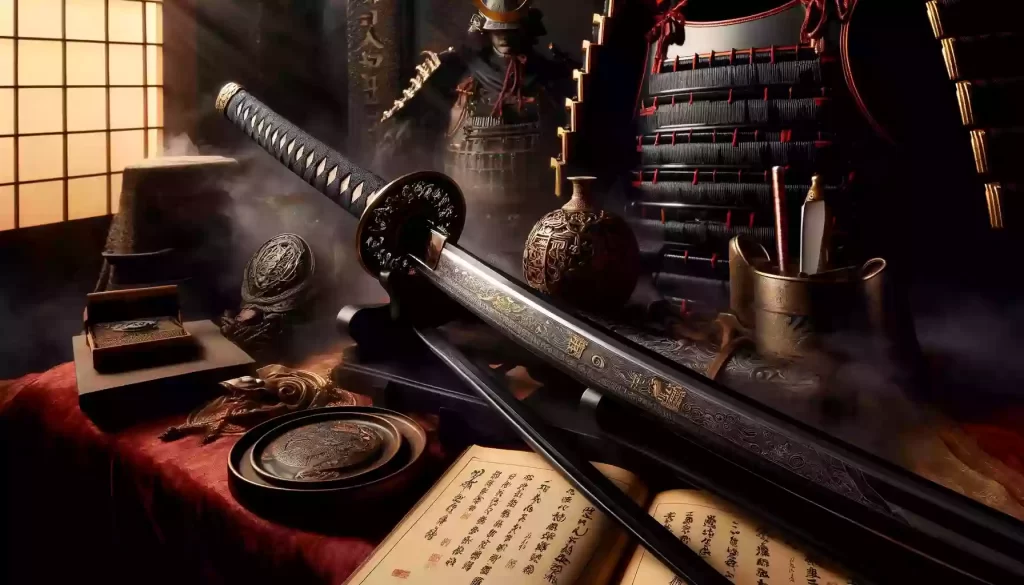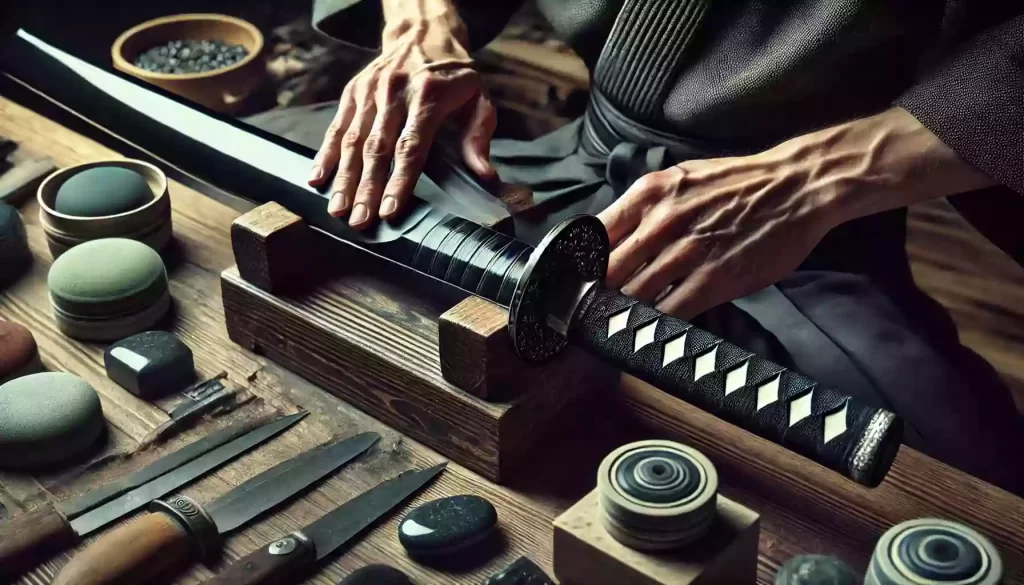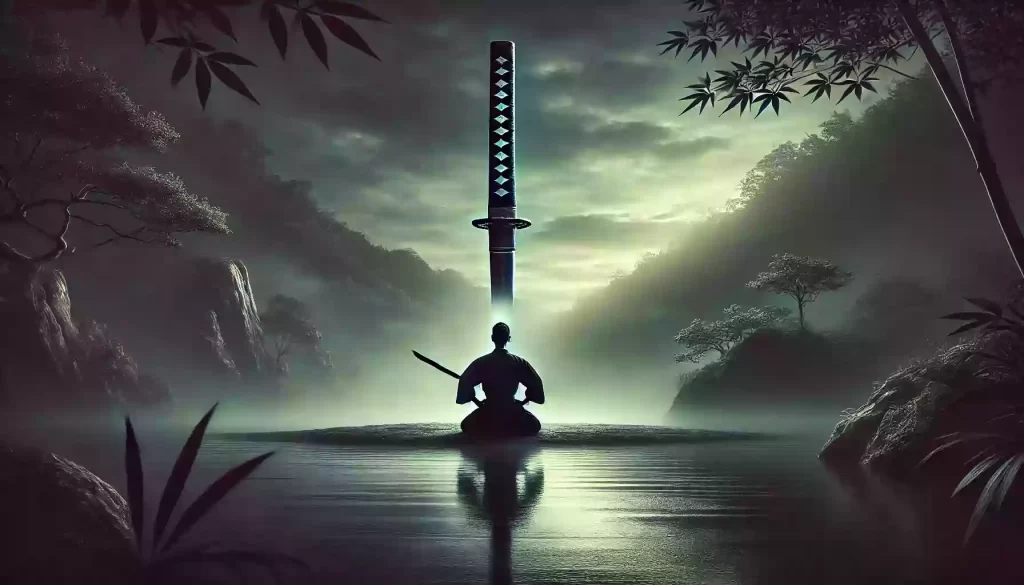The katana, synonymous with the samurai and a staple of Japanese culture, has long fascinated many. Among the various types, the black blade katana stands out for its distinctive look and historical importance. This blog explores the origins, craftsmanship, and cultural impact of the black blade katana, providing a thorough understanding of this exceptional sword.

I. Origins and Historical Context
1. The genesis of the katana:
The katana shop, a curved, single-edged sword, emerged during Japan’s Kamakura period (1185-1333). It was crafted to meet the evolving needs of the samurai, who needed a weapon that could be drawn quickly and used effectively in close combat. The katana’s creation marked a significant development in Japanese swordsmanship, combining practicality with artistry.
2. The rise of the black blade:
The black blade katana, or “kurobina,” became notable during the Edo period (1603-1868). The blackened blade was not just an aesthetic choice but also served functional purposes. Black oxide coatings protected the blade from rust and corrosion, enhancing its longevity. Over time, the black blade became a symbol of stealth and elegance, favored by certain samurai and ninja clans.
II. Craftsmanship and Techniques
1. The forging process:
Crafting a black blade katana requires meticulous skill. Traditional swordsmiths use tamahagane, a high-quality steel derived from iron sand. The process starts with smelting the tamahagane in a tatara furnace, followed by repeatedly folding and hammering the steel to remove impurities and create a strong, flexible blade.
2. Differential hardening and blackening:
A key feature of a katana is its differential hardening, achieved through a process called “yaki-ire.” The swordsmith applies a clay mixture to the blade, leaving the edge exposed. When heated and quenched, this technique creates a hard, sharp edge while maintaining a softer, resilient spine. The blackened appearance is achieved through special heat and chemical treatments, resulting in a durable, dark oxide layer.
3. Polishing and finishing:
After forging and hardening, the katana is polished to reveal its intricate details. Skilled polishers use a series of increasingly fine stones to highlight the blade’s hamon (temper line) and hada (grain pattern). For a black blade katana, additional steps are taken to enhance the dark finish, ensuring a uniform and visually appealing appearance.

III. Cultural and Symbolic Impact
1. The black blade in samurai culture
In samurai culture, the black blade katana was often associated with elite warriors and covert operations. The dark finish was believed to reduce glare and make the sword less noticeable, ideal for nighttime missions. Samurai wielding black blade katanas were seen as highly skilled and disciplined, embodying the principles of bushido (the way of the warrior).
2. The black blade in modern media:
The allure of the black blade katana extends beyond historical contexts, finding its place in modern media. In movies, anime, and video games, black blade katanas are frequently depicted as weapons of choice for anti-heroes, ninjas, and legendary warriors. This portrayal reinforces the sword’s mystique and its association with power, mystery, and elegance.
3. Collecting and preserving black blade katanas:
Today, black blade katanas are highly sought after by collectors and martial arts enthusiasts. Authentic black blade katanas, especially those crafted by renowned swordsmiths, can command high prices in the market. Collectors value these swords not only for their aesthetic appeal but also for their historical and cultural significance. Proper care and maintenance are essential to preserve the blade’s condition and prevent corrosion.
IV. The Black Blade Katana in Martial Arts
1. Practical use in kenjutsu and laido
The black blade katana is not just a decorative piece; it is a functional weapon used in various Japanese martial arts. Kenjutsu and iaido practitioners appreciate the balance and precision of a well-crafted katana. The black blade adds an element of stealth and elegance to their training and demonstrations.
2. Symbolism in martial arts philosophy
In martial arts philosophy, the black blade katana represents the merging of darkness and light, strength and subtlety. Practitioners see the black blade as a symbol of their journey towards mastery, embodying the duality of martial prowess and inner peace. The black blade katana serves as a reminder of the discipline, focus, and dedication required to excel in the martial arts.

Final Thoughts
The black blade katana is more than just a weapon; it is a work of art and a symbol of a rich cultural heritage. From its origins in the hands of samurai to its portrayal in modern media, the black blade katana continues to captivate and inspire. Whether admired for its craftsmanship, collected for its historical value, or wielded in martial arts, the black blade katana remains a timeless icon of Japanese swordsmanship.
By exploring the enigma of the black blade katana, we gain a deeper appreciation for the artistry and tradition that have shaped this extraordinary sword. Its enduring legacy is a testament to the skill and ingenuity of the swordsmiths who forged it and the warriors who wielded it with honor.